If you’re interested in keeping livestock, especially goats, shelter is one of the primary provisions for successful goat breeding. Whether you’re keeping one or five goats, you need to provide a roof over their heads that protects them from harsh weather and provides a conducive environment to retire into at night.
Goats are outdoor livestock but still require a form or shelter to keep them safe. Goats typically do not need anything fancy for shelter, with sturdy houses being the preferred option for rearing this livestock. Nevertheless, you can still choose from many designs, whether you want to build or buy premade shelters. Due to the simplicity of this project, most goat rearers prefer to build sheds rather than buy them.
What you build for your goat depends on many factors, but the designs to choose from are endless. If you’re ever struggling with building a goat shed, this guide contains several goat house designs and their plans to make the project manageable.
DIY Goat Shelter Plans
The number of goats, the position of the goat shed, and available resources are some of the significant factors that affect the style of goat shelter to build. Here, we highlight several goat barn plans with varying difficulty and designs that goat rearers can utilize for their DIY project.
1. Pallet Shelter And Playhouse
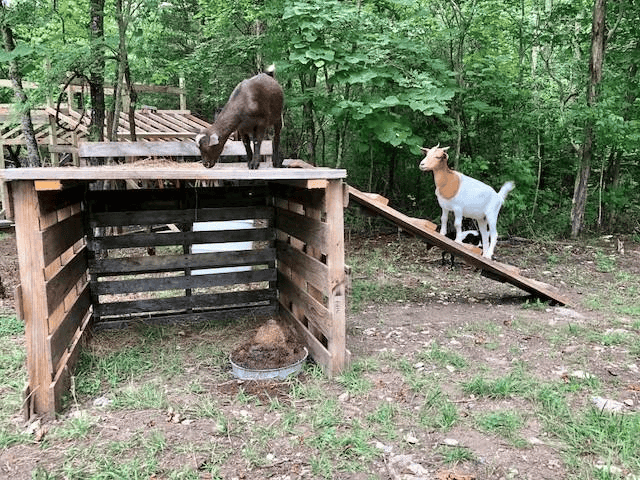
Goats like climbing, and that is why a goat shelter with a combination of a playhouse and shed, is essential. It features an open-entrance shed made from pallets, with the roof acting as a playhouse. A ramp is connected to the side of the barn to give the goats access to the roof.
Since the goats will spend considerable time on the roof, you must ensure the roof is sturdy enough to carry the extra weight. The project is easy to assemble as it uses pallets for its sides. Not only are pallet projects easy to make, but they are also affordable. Due to its simplicity, even beginner-level DIYers can complete the goat house.
You’ll need 2×8 and 2×4 scrap wood, several wood pallets, a measuring tape, a circular saw, and a drill for this pallet shelter and playhouse design. Choose a suitable location in your backyard that does not hold water, and follow this complete plan to build the shed.
2. PVC Pipe Goat Shelter
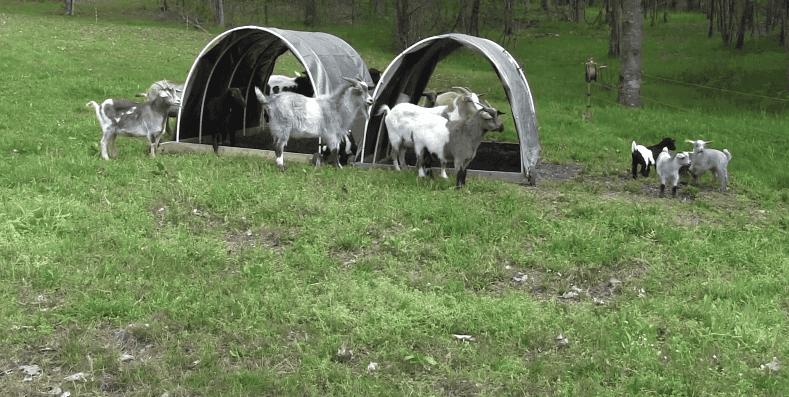
Using simple PVC pipes and a tarp to build a goat shed may lose too many goat breeders, especially as it feels lightweight and feeble. While this structure is hardly the most durable goat barn you can build, its open ends design leaves enough room for the goat, preventing cramping, which can lead to damage to the shelter.
Building this project is easy and involves marking the desired position and building a floor frame with wood. With the whole barn on wheels, moving it around the backyard becomes easier. The PVC pipes that create the barn frame are covered using a tarp. The material list is long, but the assembling process is straightforward for the moderately experienced DIYer.
The materials for this double shelter goat housing project include three 10-foot 2x4s for the floor frame, six 10-foot half-inch PVC pipes from the overhead frame, three 4-way connectors, two 3-way connectors, and a tarp. Materials like screws, PVC cement, metal brackets, and zip ties are vital.
3. Fully Covered Goat House
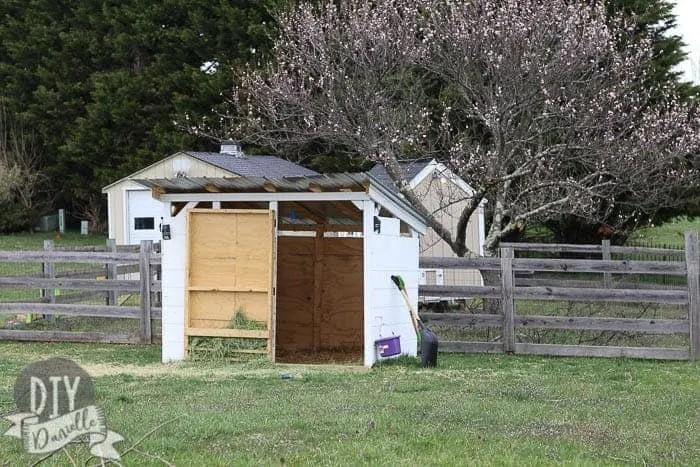
Areas with many goat predators require more than regular open-ed goat shelters to protect the goat from the environment and dangerous predators looking to eat your livestock. This is why this advanced-level goat shelter is helpful for people in these regions looking for total protection for their goats.
It features a higher barn height, so it becomes difficult for predators to go through its corrugated roof, a large door, and sides covered with plywood with small gaps at the top for air to enter. This large project will require a lot of resources to complete, but it offers a lot more protection.
The guide is a two-part series, with the first section detailing how to build the frame while the second part contains siding and roofing instructions. You’ll find a complete list of materials and cutting dimensions for each piece.
4. Pallets And Corrugated Roof Shelter
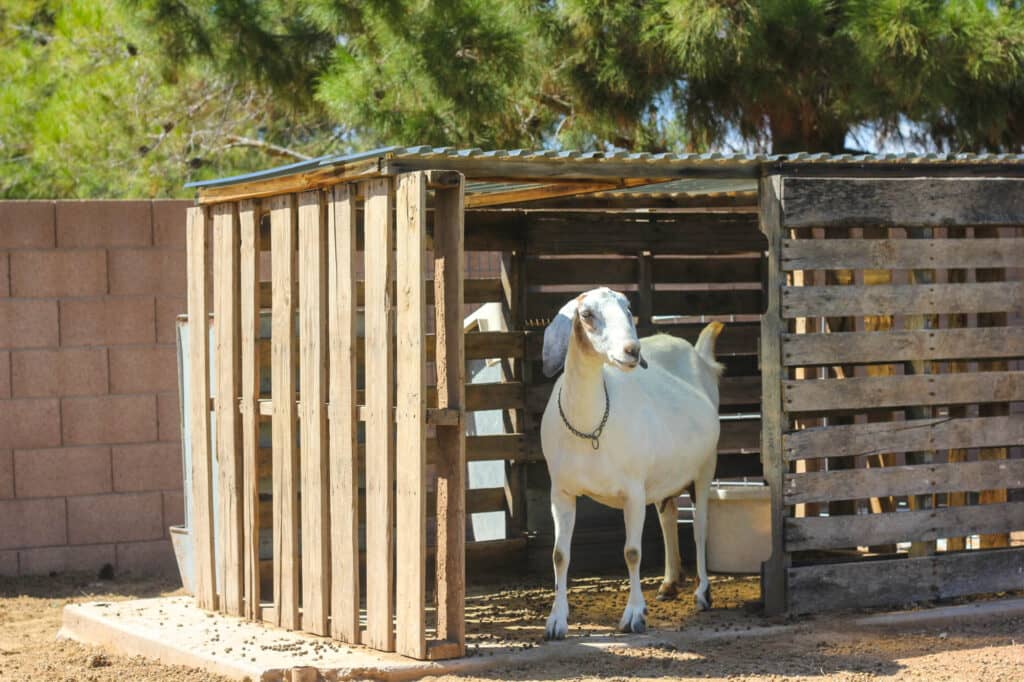
Pallets are popular goat barn material due to their open sides, that provide shade while leaving room for ventilation in the shed. The pallets are usually also gotten for free, making the project highly affordable to build. This design uses pallets for its sides and corrugated roofing sheets while leaving ample entrance space in front.
This pallet goat house is built on a concrete floor to provide a stable and durable surface for the shed and goats. It is perfect for coverage against rain and the sun. However, you can use the bare ground, pavers, or a deck as your floor. Depending on your dimensions, you may not need to cut the pallets, which makes assembling even easier.
This guide includes a video of the assembling process and additional information on where to get pallets and how to cover pallet holes where necessary. By following the guide, you can complete this goat house in two hours, aside from the time it takes to set the flooring of your choice.
5. A-Frame Goat Shelter
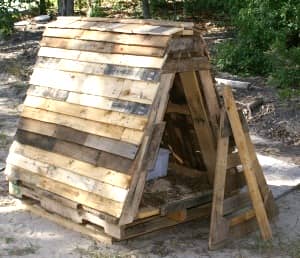
You can build a sturdy A-frame goat house using pallets or wood lumber. It involves using three pallets to build the floor and sides that act as roofs for the house. Its unique look gives your backyard an attractive new addition.
For the floor panel, you’ll need to cover the pallet gaps using lumber to prevent the goat legs from falling inside the gaps. If your goat has horns, you want to remove the middle slats from the side pallets to prevent the horn from getting stuck.
The project is described in a multiple-part series, including building the shelter and the door frame, back frame, and roofing, among other processes. The detailed description of this A-frame goat house makes it straightforward to construct. Nevertheless, preparing each pallet before attachment means special care needs to be taken to ensure the shed is durable and safe for your goat.
6. Large Goat Shelter For The Herd
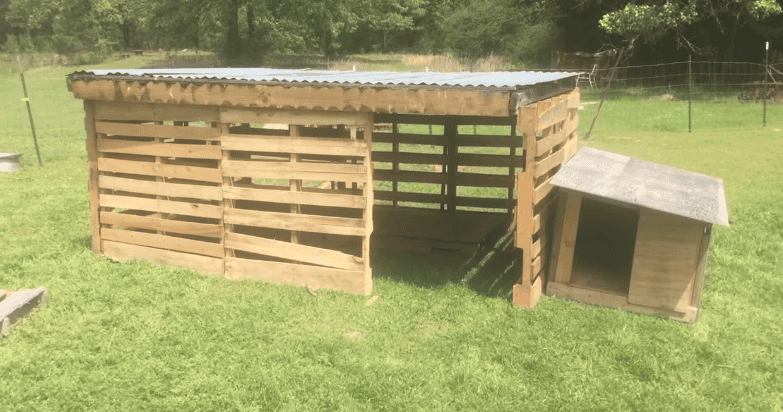
If you have a large goat herd, it may be time to build a large herd house that can accommodate all your goats while maintaining its conduciveness. This goat house is large enough and sits away from any walls or structures, ensuring enough air can enter the house through the open gaps in the pallets.
It features a small dog house beside the shelter to serve as a step for the goats to get on the roof for some recreational activity. While this project will require a lot of room and roofing sheets, it utilizes affordable pallet material for its sides, and it is built on the bare ground making the whole project inexpensive.
Follow the video guide to see how to assemble the pallets, attach corrugated roofing sheets, and build the small dog house acting as a step. Your herd will love this large house with a step to climb the roof.
7. Multilevel Goat Shelter

Building a goat shed on slanty land can be a challenge for many. However, with the right idea, like this multilevel shed, you can build a level goat house away from running water. The idea is to build a house for the goats on a raised platform to keep them away from water and get level flooring.
The plan follows the process as the originator builds the multilayer house for goats that provides protection and fun climbing activities. There’s also additional room underneath the shed for storing goat feeders, with the slanting roof directing rainwater away and keeping the area dry.
The description in the plan is less detailed than most, making the project slightly more complicated. It is reserved for highly experienced DIYers who can figure out their dimensions and cutting guides. You’ll also require a lot of materials for this massive project.
8. Walk-in Goat Barn
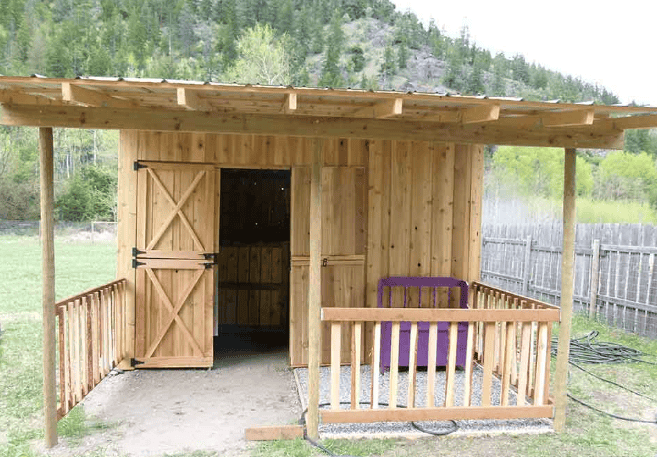
Here is a tall walk-in goat barn design with an extra verandah suitable for a large herd. Its sizeable double-door design provides access and ventilation to the shed. The tall design makes it easier to access the barn without crouching when cleaning.
This large project is carefully built and will last a long time; however, it requires an experienced DIY enthusiast to build extra resources and space. Its extra verandah gives the goats a shaded area during the day, while the closed shed provides more secure housing to stay away from predators at night.
The design features a general feeding area and two stalls accessible from the feeding area. One of the stalls can be used as a hay storage location. The detailed plan includes a plan of all the sections with proper dimensions. You’ll also find a part and cut list, among other vital information, to complete the goat barn.
9. Large Wired Goat Pen
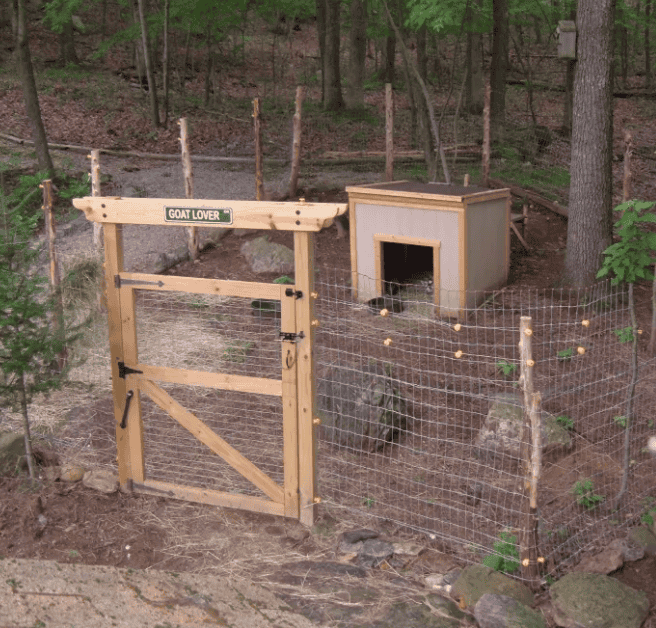
This design is ideal if you have ample backyard space and are looking for a well-secured goat pen to keep predators out and your goats safe inside. It features a cleared area surrounded by a wire fence, a large door with a lock, and an adequately built goat house inside the fence to keep the goats away from harsh weather.
It is a more permanent goat shed solution and is perfect for long-term planning as it costs a lot of resources to build. You’ll need fence posts buried two feet into the ground and secured with cement while the wire around them is held to the ground using large stones. Use woven fencing to eliminate sharp edges that can injure the goats as they like to rub their bodies against objects.
Exterior-grade T-11 siding and 2×3 lumber are the primary materials for building the goat shed. The roof is slanted towards the back to direct water away. At the same time, a simple platform is built at the back to make it easy for the goats to climb the roof for some recreational activity. Follow the plan for all the information about this design.
10. Simple Cattle Panel Roof Goat House
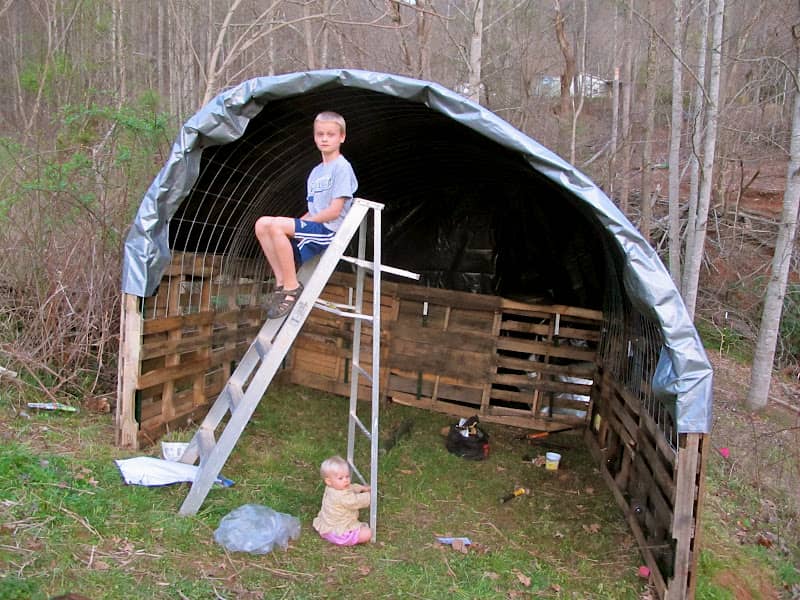
This extensive design involves a stylish curved roof made from cattle panels. It is easy to build and is a perfect design if you quickly want to get a house ready for a newborn or for the winter. However, remember that cattle panel roofing may be unstable, especially in high-wind situations. Adding a metal or wooden frame under the roof to hold the cattle panel is a great way to ensure stability.
The panel roof is the most visible addition to this design, with a large tarp covering the panel and providing shelter against moisture and sunlight. The sides are built using pallets with gaps, leaving room for ventilation in the large area. With the floor left bare, keeping the project simple and easy to make.
Start by placing T-posts around the corners of the marked areas and assembling the pallets using lag bolts. Stapling the cattle panel to the pallets from one side to the other will create the loop, which is then covered using a tarp.
FAQ’s
If you have any questions about building the proper goat shelter, going through the FAQ section can help you answer all your questions, as it includes common questions about the process and their answers.
Ans. Large enough to accommodate all your goats without cramping while having room for proper ventilation to prevent the breeding of diseases. Provide about 15 to 20 feet per goat when building.
Ans. The materials depend on your chosen style, with pallets, tarps, lumber, PVC pipes, and corrugated roofing sheets among the most common building materials.
Ans. You should build a permanent structure if you plan to rear your goats for a long time. Temporary sheds are more suitable when building smaller goat houses and when you intend to move them frequently for grazing and protection.
Finally
One of the first provisions you should have for your goats is a suitable shelter that protects them from predators and harsh weather. Building a suitable shelter for the goats depends on your needs, including the size of your herd, the resources available, and your skill level.

